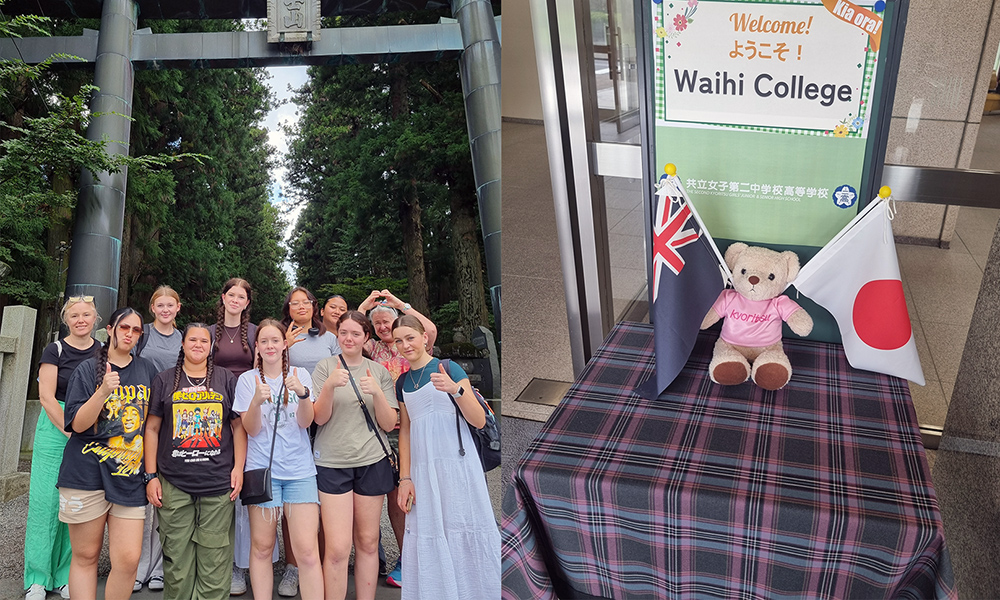
Teacher Dot Carter (back row far right) says many Waihi College students set new career pathways and goals on returning from Japan
The trip started at 3am at the kura [school] with a karakia from our kaumatua, and then we headed off in the dark to Auckland and the long flight to Tokyo.
Arriving in Japan on the eve of the autumnal equinox holiday, or shuubun (秋分の日), we were greeted at Narita Airport by teachers from Kyoritsu Girl’s College waving our Waihi College scarves.
From there, it was onto the bus to cross Tokyo to Hachioji, the city on the outskirts of Greater Tokyo where our students would be attending school and home-staying. Earlier this year, the Waihi College students hosted girls from Kyoritsu school, so they understood the manaakitanga concept.
During the week we spent at Kyoritsu Girl’s College, the Waihi students participated in a range of activities including ikibana [flower arranging], tea ceremony, wearing yukata [summer kimono], visiting areas around Mount Fuji, going to Ueno Zoo and Ginza area, doing yoga, calligraphy, printing on silk and walking to shrines and the emperor's mausoleum.
This year’s cohort of students were particularly sporty and loved the taiko drumming session, volleyball and rugby volley gym experiences. It was a packed itinerary that really exposed our students to Japanese culture and what makes it so special.
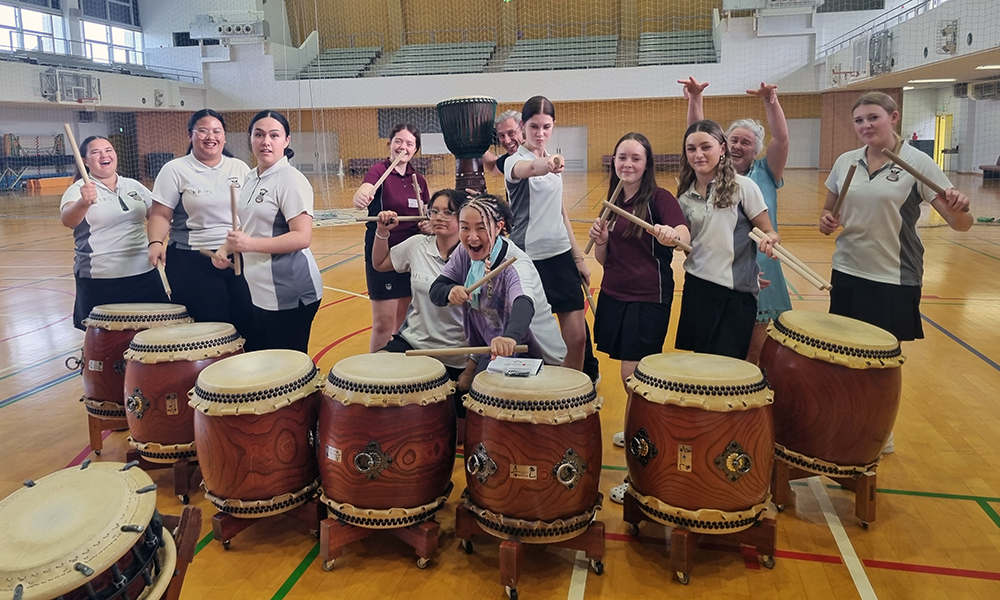
Taiko drumming was one of many highlights for the Waihi students
The shrine near Fuji was a highlight for our students because it wasn't so busy as other shrines. The long, leafy, pathway to the top of the hill was lined by stone bells - a little bit like the Borobodur bells in Java, Indonesia. The girls found it a very peaceful and contemplative place.
Our students attended Japanese language lessons and took part in English classes. One of the teachers was experimenting with experience-based learning, so the students walked down to the Imperial Mausoleum in Hachioji where Kyoritsu students recounted stories about the area that are important to the local community. We did a similar activity with the Kyoritsu girls when they visited Waihi – teaching the visiting group our local Pūrākau (story telling) and waiata (songs).
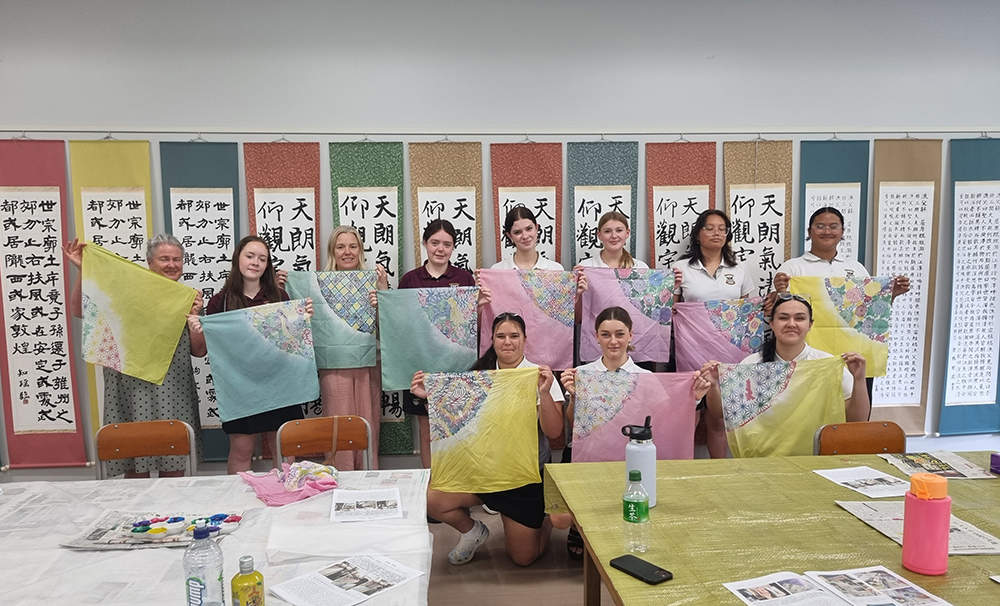
The Waihi students participated in a wide range of classroom activities, including silk printing
Because our drama teacher was involved this year, we led quite a few drama games to engage in language learning as well as simple kapa haka routines and ice breaker games.
We were very lucky to have some of our kapa haka leaders on our trip, so after the Kyoritsu girls sung their school song and a couple of items, such as soran bushi [a famous traditional Japanese song and dance] and yodelling (yes yodelling...) we performed poi, Samoan sasa, haka and our school waiata. We left them with homemade poi and also found rakau sticks Waihi students from previous years had left there.
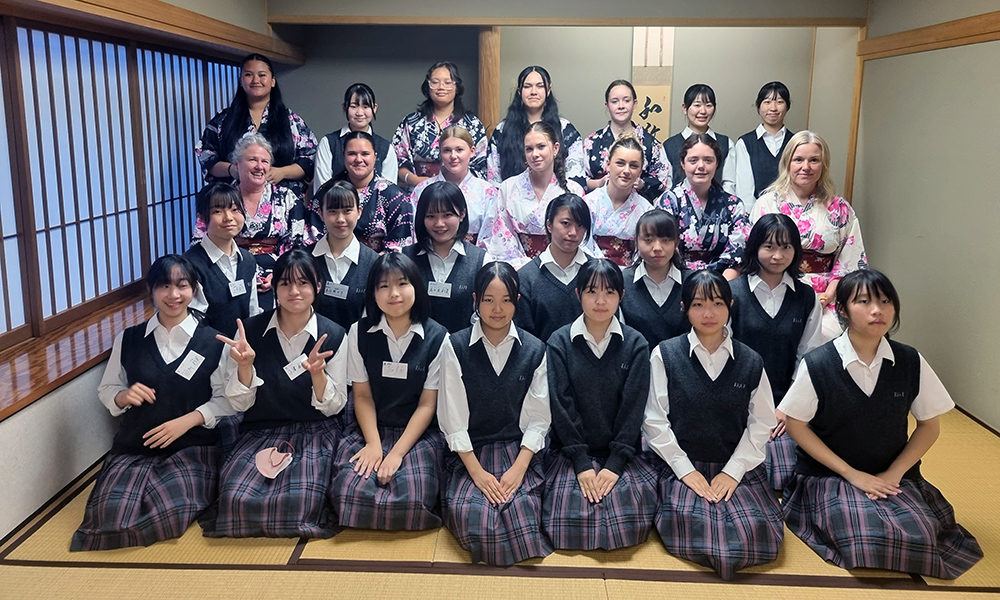
Dot Carter says Kyoritsu Girls College has become an extension of Waihi College's whānau
Waihi College's Japanese exchange with Kyoritsu Girls College has become very important to our school – Kyoritsu has become an extension of our whānau.
We live in a rural area and our community has minimal interaction with Asian cultures, but as we increase our relationship with Kyoritsu College through the exchange programme, we can see a growing appreciation of other cultures in the community.
When our students return from Japan, they return with real-life, hands-on knowledge of the country, not just through social media, school lessons, TV or hearsay.
Many of our students set new career pathways and goals on returning from Japan, such as returning to study in Japan or getting their parents to visit there on holidays, as well as escalating their language learning to communicate better with their Asian counterparts. Because of this greater interest in language learning, we have seen an increased need in our senior school to provide language pathways at NCEA level as a means to potential career pathways.
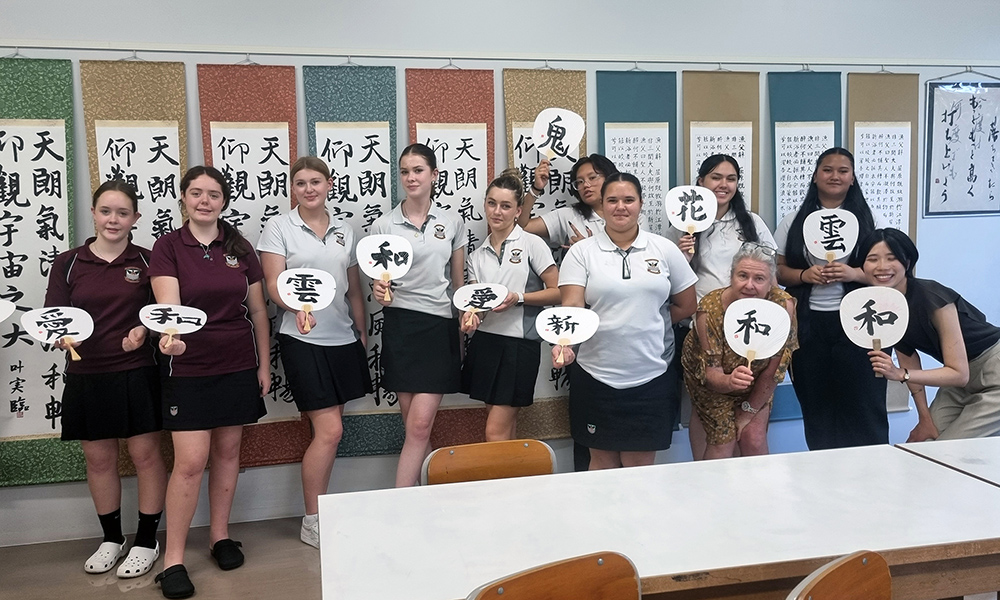
We would like to thank the Asia New Zealand Foundation and Mr Amane Nakashima, president of Nakashimato Co Ltd, who provides funding for Japan Study Grants.
The Foundation's education programme provides New Zealand educators with the knowledge, resources and experiences to equip their students to thrive in Asia.
The Foundation’s Japan study grants assist secondary school classes (Years 9 to 13) to travel to Japan for study tours. Japan study grants are kindly funded by Nakashimato Co Ltd. of Japan.


